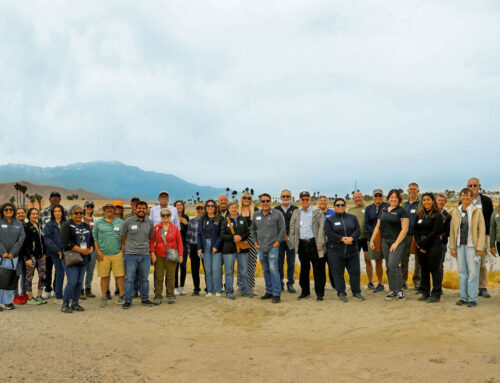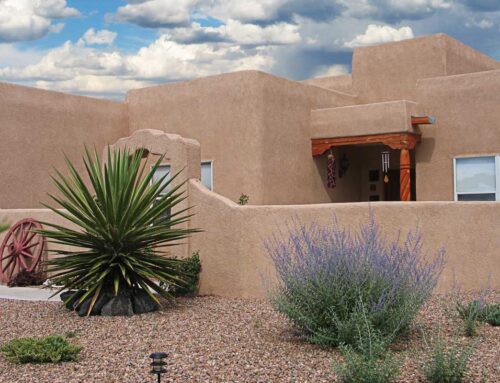In the past few years, desert landscaping — sometimes called “desertscaping” or “xeriscaping” — has built undeniable momentum in the Coachella Valley and throughout the state. Many homeowners associations, once reticent to allow turf removal, have changed landscaping codes or even sponsored projects themselves, like they did in Sun City Shadow Hills. Many new developments install desert landscapes at construction, skipping lawns altogether. Experts agree that about 70 percent of California’s residential water use occurs outdoors. By transitioning from grass lawns to desert landscaping or artificial turf, residents can often cut their water use by half.
Try the following steps to make your landscaping more drought-friendly:
1. Choose water-efficient plants that grow well in the desert climate.
2. “Hydrozone.” Place plants that use a lot of water together, and plants that don’t need much water in a different part of the landscape. Irrigate accordingly.
3. Water early in the morning.
4. Consider replacing your lawn with low-water-use landscaping.
5. Mix compost evenly and deeply into sandy and clay soils before planting.
6. Control weeds.
7. Let roots of established plants dry out a little between irrigations. Water deeply and infrequently slightly below the root zone, at depths of six to eight inches for annuals, perennials, and turf; eight to 12 inches for shrubs and perennials; and 18 inches to two feet for trees.
8. Spread a layer of mulch on top of soil around garden plants and trees. It should be about three inches deep.
9. Avoid over-fertilizing.
10. Sweep walkways and driveways rather than hose them down.





